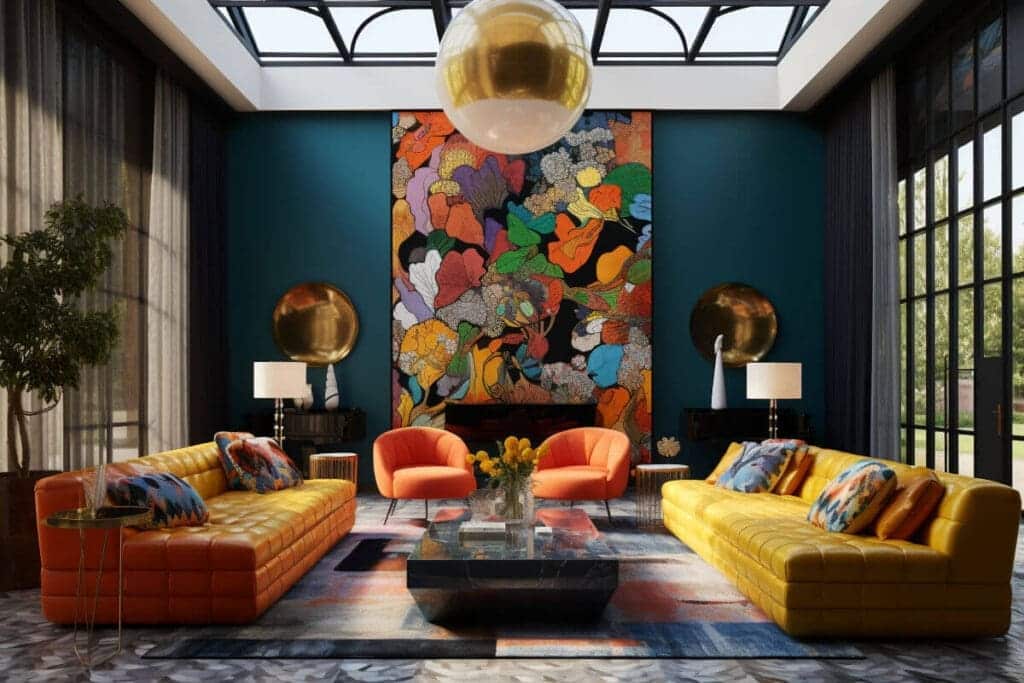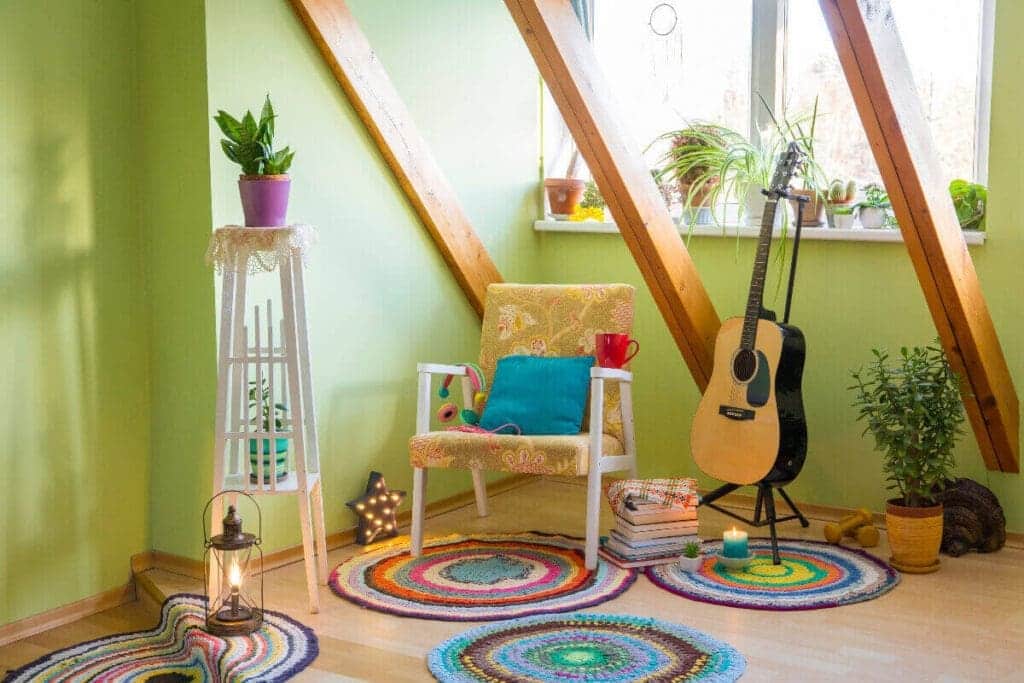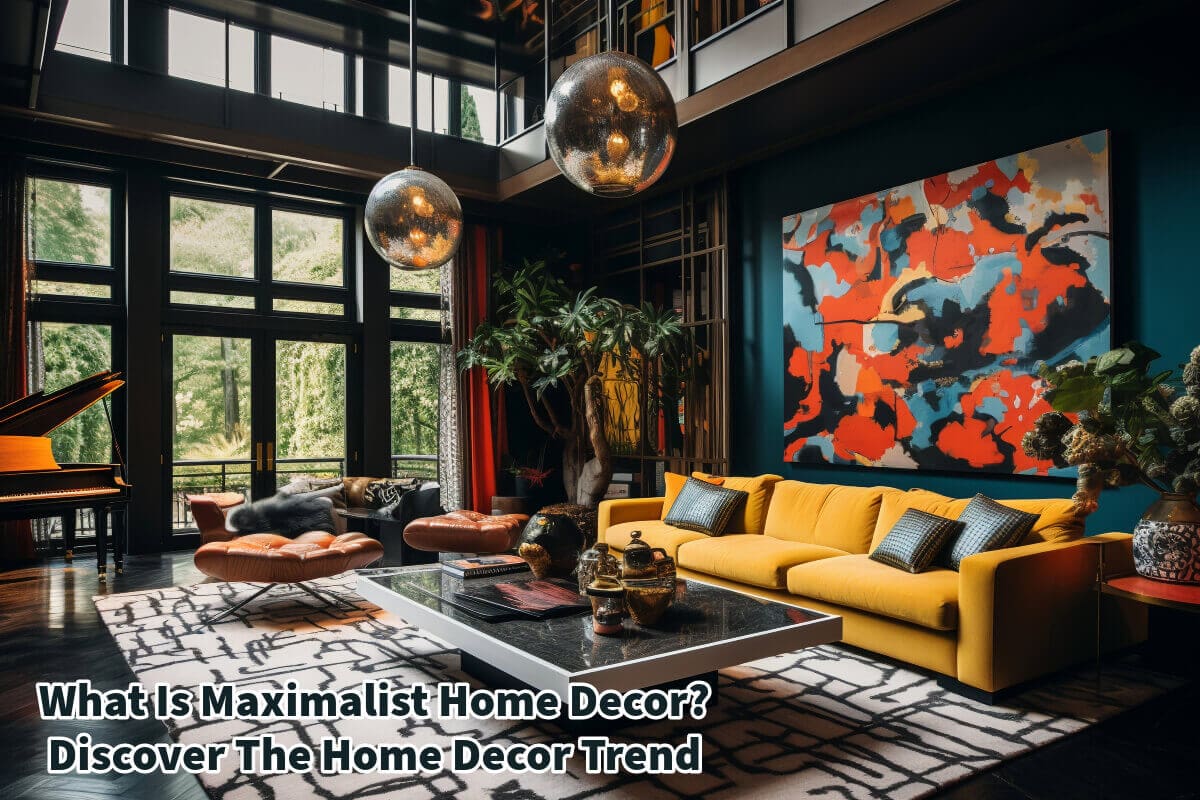You probably know the maximalist decor style when you see it: High-contrast hues merge seamlessly in an artful mix of patterns, textures, and layers.
If minimalist design epitomizes “less is more,” then maximalism unabashedly declares that “more is more.” While the aesthetic might seem cluttered or chaotic to some, the best maximalist spaces are carefully curated, embodying as much thought, effort, and intentionality as their minimalist counterparts.
Table of Contents
- The Essence Of Maximalism Trend
- The Maximalism Trend Is Not About Clutter
- Maximalism, No Rules, But Some Design Guidelines
- Related Content
The Essence Of Maximalism Trend
Maximalist decor tells a story at its core—specifically, it tells your story. It allows for an expressive, sentimental approach to interior design where the individual’s personality shines through every choice, from wall colors to throw pillows to art pieces.
Here, you can combine old and new, displaying family pictures alongside contemporary art, combining store-bought furniture with vintage finds, and even celebrating your culture and heritage through unique pieces.

Many individuals may already be practicing the principles of Maximalist home decor without even realizing it. Suppose your home is adorned with family photographs, treasured mementos, and souvenirs from various journeys. In that case, your living space is a narrative canvas that captures who you are and where you come from.
You may not recognize that this approach to home decoration aligns with a design trend known as Maximalism, which is all about encapsulating your life story.
The Maximalism Trend Is Not About Clutter
While maximalism might initially appear to be a free-for-all approach to interior decorating, it’s crucial to differentiate between this artistic style and mere clutter.
Clutter often occurs without intention, born out of disorganization or an inability to part with objects, irrespective of their emotional or aesthetic value. On the other hand, maximalism is an intentional and design-driven approach to home decor.

Thoughtful Design Choices
Furniture, artwork, or a simple decor item holds significance in a maximalist setting. These aren’t randomly acquired or placed objects; instead, they are thoughtfully chosen elements that contribute to the narrative of a room.
They are placed with design and aesthetic considerations in mind, arranged to complement one another rather than occupy space.
Organization And Cohesion
The maximalist style is very much about order and organization. It involves laying out objects and elements in a way that makes sense to the eye and the mind.
Patterns might be mixed, and colors might be bold, but they are done within a planned framework for visual cohesion.
For example, a room could feature an eclectic array of colors, but those colors are carefully balanced across the space to create harmony. There’s an underlying logic that helps guide the eye and provides a sense of structure, even amid what may seem like chaos.
Emotional And Aesthetic Resonance
In maximalism, each object serves an aesthetic and an emotional function, contributing to the story the room tells about its inhabitants. This is why it often incorporates heirlooms, travel souvenirs, or pieces of personal significance.
However, these items are not just thrown in randomly; they are carefully curated and positioned to create a cohesive visual and emotional impact.
Curated, Not Cluttered
What sets maximalism apart from clutter is its sense of curation. While a cluttered room may feel overwhelming and stressful, a well-designed maximalist space exudes richness and depth. It’s a visual feast where every dish complements the others.
Maximalism isn’t about having a lot of things; it’s about having the right things, arranged in the right way, to tell the story you want to tell. Far from being a random assemblage of items, it’s a carefully curated, organized, and design-driven collection.
Maximalism, No Rules, But Some Design Guidelines

While there are no hard-and-fast rules for maximalism, some strategies can prevent your space from veering into disorganized territory.
Tell Your Story With Your Design
Begin by identifying the essence of what makes you unique. Are you an avid traveler with a collection of global artifacts? Or perhaps a vintage clothing enthusiast with an eye for retro patterns?
Use these interests as guideposts for selecting furnishings and design elements that resonate with you. Clashing old and new, or different styles and epochs, is a cornerstone of maximalist decor.
Color Your World
Maximalism is often associated with vibrant, contrasting colors. Forget traditional wisdom on color psychology and go for shades that excite you.
The skillful maximalist decorator may use a rainbow of shades to paint their world, but if you’re a beginner, it might be easier to stick to a palette of two to four colors. Repetition can be soothing to the eye, so feel free to sprinkle these shades throughout your space.
Balancing Act Of Design
While maximalism encourages an abundance of décor, it also requires restraint to avoid creating a cluttered mess. For example, if you’re styling a shelf or a tabletop, start with a focal piece like a piece of artwork or a mural and arrange other items around it. Remember, size matters—medium to larger-sized objects often work better than a plethora of tiny knickknacks.
Bold And Methodical Choices Of Design
Boldness is critical in maximalism. Consider replacing standard lights with unique fixtures or applying patterned wallpapers to ceilings and walls.
However, even in this audacity, there’s a method. If you’re mixing wallpapers, for example, keep them in the same color family but vary the scale and pattern.
The Case For Black And White
Black and white can neutralize elements even in a riot of color and pattern. These timeless shades provide grounding effects, adding a layer of calm amidst the maximalist chaos. They serve as buffers, creating visual breaks that allow individual elements to stand out.
Creating a maximalist space is like orchestrating a symphony—each element has a role in the grander scheme, no matter how bright or bold. You create a visually captivating space and a personal sanctuary by carefully selecting pieces that speak to your personality and arranging them thoughtfully.
In a world that often values restraint and minimalism, the maximalist style is an anthem for those who believe that more can be more meaningful, expressive, and fulfilling. So go ahead, let your inner maximalist shine. After all, your home should be the ultimate expression of you.
If you are interested in seeing how Mondoro can help you with your handmade home decor products – we would love to talk to you about how we can help you.
Find out more about how Mondoro can help you create, develop, and manufacture excellent home decor and furniture products – don’t hesitate to contact me, Anita. Check out my email by clicking here or become a part of our community and join our newsletter by clicking here.
Mondoro gives out a FREE Lookbook to anyone interested. You can receive a copy of our latest Lookbook by clicking here.
Listen to our Podcast called Global Trade Gal. You can find it on all major podcast platforms. Try out listening to one of our podcasts by clicking here.
Subscribe to our Mondoro Company Limited YouTube Channel with great videos and information by clicking here.
Related Content
Is Nickel A Natural Element? All About Nickel And Its Everyday Uses
Nickel is a natural element as it is found in nature. It is a hard yet malleable and ductile metal with a shiny silver color with a slight gold tinge. Nickel is found mainly in Russia, South Africa, Canada, Australia, and some parts of China and Vietnam.
You can learn more by reading our blog, Is Nickel A Natural Element? All About Nickel And Its Everyday Uses by clicking here.
What Is The Mother Of Pearl Shell Used In Home Decor Products?
Mother of pearl, also known by the scientific name of nacre, is a pearl layer on the inner layer of the oyster shell. This pearl layer of the oyster is taken off the outer oyster shell. Then the leftover inner pearl shell is cut into various small shapes and sizes to be glued onto various home decor products such as mirrors, boxes, trays, and lamp bases.
You can read our blog on What Is The Mother Of Pearl Shell Used In Home Decor Products? by clicking here.
Home Interior Mirror Ideas, Manufacturing Home Decor Mirrors
Many Interior designers use mirrors to help them with their decorating. This is because a mirror can become a design focal point for any room. A mirror can help brighten a dark space and make a room look larger.
You can learn more by reading our blog, Home Interior Mirror Ideas, Manufacturing Home Decor Mirrors, by clicking here.

